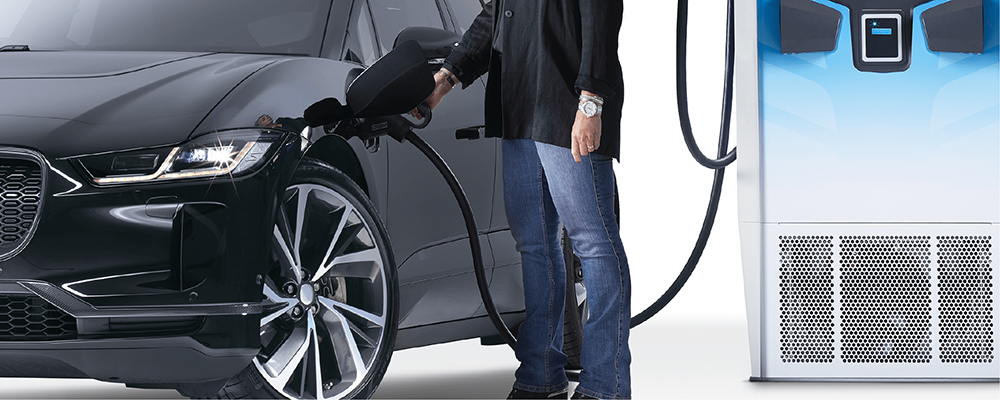What Drivers Want from Charging Networks

Shell Recharge, Parkopedia, and Plug-in America recently surveyed thousands of drivers around the world and the results are in: They want more public chargers that are easier to use and easier to find.
More Chargers
According to Parkopedia survey results, two thirds of all EV drivers worldwide and 73% of American EV drivers have run out of charge at least once. The same survey found that 22% of EV drivers across the globe and 25% of US EV drivers have run out of charge more than once. It’s clear that EV drivers everywhere could use better charging infrastructure. And when asked, they admit it.
Plug-In America found that about 42% of EV drivers they surveyed were concerned about charging stations being too far apart. Charger availability is also a major barrier to EV adoption. From Parkopedia: 52% of those surveyed who wouldn’t consider an EV are worried about the number and availability of chargers away from home. The same survey found that 53% of drivers who are considering an EV are worried about finding chargers away from home.
Parkopedia also found that more that 33% of drivers around the world stress about being able to find a charger when away from home. Range anxiety levels were highest in drivers in the US and France. And more than one in five drivers find it challenging to locate EV charge points away from home “very frequently” or “all the time.” In the US, 14% of EV drivers struggle “all the time” to find chargers away from home.
The lack of charging infrastructure in the US and some parts of Europe seems to be hindering EV adoption. More chargers in convenient locations will help alleviate fears and encourage more people to purchase and drive EVs. Better charger locating apps and app integrations will also help drivers find those chargers and plan long-distance trips more effectively.
Easy Payments
EV drivers want easier ways to pay for public charging. Shell Recharge found that 47% of EV drivers they surveyed are willing to pay more for a single method of payment for charge points. And 73% of drivers surveyed would prefer an EV with integrated EV charging and payment.
More data from Parkopedia reveals how EV drivers are currently using public charging networks (excluding Tesla’s network, which was considered as separate from other networks). Around 27% of drivers use a card at charging locations, 25% use contactless payment, and 25% use app/website payment options. There were some differences in preferred payment systems among countries. For instance, UK EV drivers like to use contactless payment when charging, while French drivers like to pay by credit/debit card. RFID cards are the least popular payment type. There were also differences between urban and rural EV drivers: Urban drivers preferred apps, advance payments, and Plug & Charge while rural drivers preferred paying with a credit/debit card.
Reliable Chargers
Unfortunately, Plug-in America found that broken or unavailable chargers in public charging networks (excluding Tesla) are the leading concern for EV drivers. About 37% of respondents said broken or unavailable chargers were a major concern and 9% said they were a dealbreaker for using a network. Maintaining high charger uptimes is critical for charge point operators, and for changing public perception about EV charging.
Tritium modular chargers are designed for reliability and maximum uptime. If a single module requires maintenance, Tritium chargers can still operate at reduced power until that module can be replaced. Tritium power modules are compact and lightweight and can easily be replaced in the field by a technician. Both our PKM150 and RTM75 chargers use the same power modules, leading to greater parts availability and faster repairs.
Tritium also offers robust service level agreements (SLAs) and works with certified repair and maintenance companies to ensure chargers achieve maximum uptime. Through these agreements, we can offer 24-hour support to Tritium customers across the globe.
To learn more about our chargers and service level agreements, contact an expert today.
DC fast chargers handle tremendous amounts of power and are exposed to harsh conditions. It’s crucial that charge point operators have robust service level agreements and maintenance contracts to ensure chargers remain available for drivers.
Location, Location, Location
When it comes to fast charging, location is everything. Nearly half (49%) of Shell Recharge survey respondents said that they choose where to shop and travel based on the availability of charge points. More than half (57%) said they would visit destinations more frequently if they had charge points. Shell has also found through other research that EV drivers are willing to spend an hour or more at supermarkets while charging, which could boost sales for retail establishments with charge points.
According to the Parkopedia survey, EV drivers chose charging sites based on distance to the destination, charger availability, and charging cost. Charging cost was less important than location and in the US, EV drivers will pay more for convenient charging locations. Nearly two thirds said they’d be willing to pay a premium of up to 10% when charging at a convenient location. Almost a quarter of American EV drivers surveyed (23%) said they’d pay more than a 10% premium to charge up at a convenient location.
The Surveys
In January and February 2023 Shell Recharged ran an online survey. They sampled a total of 24,771 battery electric vehicle (BEV) or plug-in hybrid vehicle (PHEV) drivers in the UK (4,698 respondents), Germany (8,368), France (2,303), Italy (1,364), the Netherlands (6,715), and Belgium (1,305).
From December 2022 through February 2023, Plug In America surveyed over 3,300 electric vehicle (EV) owners and nearly 600 individuals interested in purchasing an EV.1 This survey builds on data collected from surveys conducted in 2020 and 2021.
Independent online survey of 5454 drivers, including 2225 EV drivers. The survey asked screening questions to understand drivers’ personal and car ownership and questions covering drivers’ parking and charging habits.